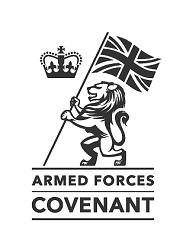|
|
|
French Flanders and Artois...
This area of Northern France lies below Flemish Flanders in Belgium and north of the Somme region. Nowadays this region
is known as Nord-Pas-de-Calais. The key WW1 areas and locations of this region include Armentieres, Arras,
Bailleul, Bethune, Bullecourt, Cambrai, Festubert, Fromelles, Hazebrouck, Loos and Vimy Ridge. There are over
350 cemeteries in this region for the thousands of allied and German casualties of the Great War. Amongst these cemeteries
is Dud Corner which has 684 graves and a memorial wall to over 20,000 men with no known graves from the Battle of Loos. The Battle of Loos took place between 25th September and the 13th October 1915; it was on this battleground that British
troops first used poison gas against the enemy. The significant thing about the Battle of Cambrai 20th November
to the 3rd December 1917 was the first successful use of tanks by the British thus changing the battlefield forever. This area of France along the Western Front suffered the most damage as a result of the extensive and prolonged fighting
of the Great War. ......... o O o ......... If you need Military Bands or Assistance with Honouring Veterans - Please contact your local Royal British Legion. If sadly this is for a Military Funeral or Honouring Veterans at their Funeral, the best contact points are here. The Commonwealth War Graves Commission has the responsibility to ensure that 1.7 million people who died in the two world wars will never be forgotten. They care
for cemeteries and memorials at 23,000 locations, in 153 countries. The CWGC values and aims, laid out in 1917, are as relevant
now as they were over a 100 years ago.... ......... o O o ......... We have added a number
of further pages and Picture Galleries to our website for you of The National Memorial Arboretum, the Ypres Salient, Flanders & The Menin Gate, Nord Pas de Calais, Somme, Vimy Ridge, Verdun and World War 1 Main Page and seven underpinning pages. ......... o O o ......... The images below are: Picture 1 {0008} - Le Touret Cemetery contains 900 headstones and a memorial to over 13,000 soldiers killed in this
sector of the Western Front from the beginning of October 1914 to the eve of the battle of Loos late September 1915. This
area saw some of the heaviest fighting of the first year of the War. Le Touret is situated to just to the Northeast of Bethune,
which is in the sector between Flanders and the Somme. Picture 2 {0014} - Le Touret Cemetery.
The memorial was designed by John Reginald Truelove who had served with the London Regiment during the War. It was unveiled
by the British Ambassador to France, Lord Tyrell on 22nd March 1930. Picture 3 {0011} - Le Touret Cemetery
contains 900 headstones and a memorial to over 13000 soldiers killed in this sector of the Western Front from the beginning
of October 1914 to the eve of the Battle of Loos late September 1915. This area saw some of the heaviest fighting of the first
year of the war. Le Touret is situated to just to the Northeast of Bethune, which is in the sector between Flanders and
the Somme. Picture 4 {0001} - Lapugnoy British Cemetery located 6km west of Bethune in the Pas de
Calais region. This is one of the many CWGC cemeteries in this area. Picture 5 {0003} - Lapugnoy cemetery
contains 1,324 identified casualties & three unidentified from WW1 and eleven WW2 casualties. Picture
6 {0005} - Just one of 1,324 WW1 casualties buried at Lapugnoy; Private H.A. Lowe, rest in peace. Picture
7 {} - N/A. Picture 8 {} - N/A. Picture 9 {} - N/A. Picture 10 {} - N/A. These images are kindly provided by Ian Humphreys, RBL, and are his Copyright. You may click on the thumb nail images
for the original - these are high res images and may not be used for commercial purposes without full written consent from
Mr Humphreys. Each image is 3264 x 2448 pixels or 3008 x 2000 pixels and are several MB in size...
Enter content here Enter content here Enter content here |
||||||
AREA17: So that we may all remember those that served, those injured and those that fell for the peace
and security of all...

